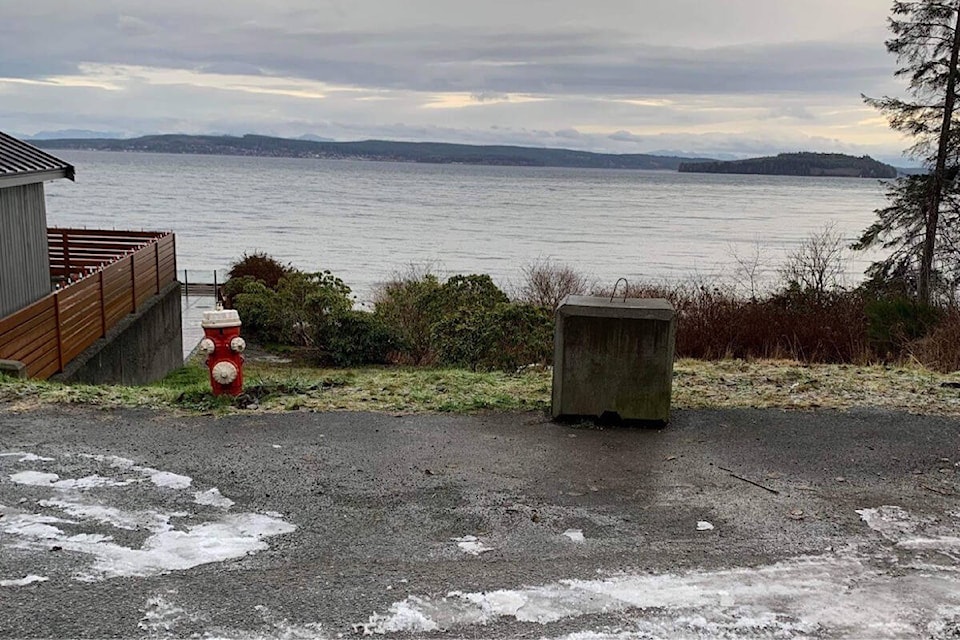Written by Derek Koel
Politi-Koel, local politics
On Dec. 6, Port McNeill council held its first Committee of the Whole (COTW) meeting, which is a less formal affair than the twice a month Council meeting. The COTW meetings are meant to provide information and spur on discussion from both staff and council.
A big chunk of the meeting was devoted to a presentation about the Connected Coast Project and how Port McNeill fits into the plan. The previous term’s council were briefed on the project but still had questions and concerns, so the delegation was called in to give the new council more details. The delegation came armed with a suggestion motion for council to approve the Port McNeill landing zone, but it was not to be.
Connected Coast Network Corporation Director/CAO David Leitch explained the overall vision while Project Lead Wes Eisses addressed the local details.
Council heard there is no cost to the town, the project is fully funded, to the tune of $45.4 million Federal and Provincial dollars, it will see the placement of 3400 km of underwater fibre-optic cable from north of Prince Rupert to Haida Gwaii, then south, around Vancouver Island, finishing up in Vancouver.
The Federal Government predetermined the 144 landing zones, where the underwater cable meets land, 56 of those being Indigenous communities, representing 44 First Nations, over 13 different Regional Districts. The Mt. Waddington region has a total of 26 different landing zones. The cable will land at places like Port McNeill, which already have high speed internet, and at more remote communities, like Holberg, Winter Harbour and Mitchell Bay, that lack ‘50/10’ internet, and to far-flung places with little to no internet, like Cape Scott, Kains and Pine Island.
Once the cable hits land, it runs underground to a propane generator housed in a metal box, typically streetside. Council was told the generator is relatively quiet and only runs during power outages and for, short, bi-monthly tests.
From there the ‘last mile connection,’ as it is called, hooks up the network to homes and businesses. This is not part of the project, it is up to the communities to make this happen, but it often involves partnerships with telecommunication providers. In fact, Connected Coast recently entered a partnership with the Village of Alert Bay, that will see 20 per cent of the profits from the network go back to the community.
Council was told the overall project is well underway, with the Port McNeill landing permits being one of the last ones needed on the coast. A total of four potential landing zones were considered, with only one being suitable.
After the 23 minute presentation, council grilled the delegation for over 10 minutes. They expressed dissatisfaction with the site chosen, which is at the end of Beach Drive, next to the last house and the town-owned waterfront property, known as Hoy Bay.
Coun. Leighann Ruel led the charge, asking, “has the property owner that is next to this been approached, are they in support of this?”
Eisses indicated he thought so but would have to confirm and follow up.
Coun. Shelley Downey expressed that Port McNeill is already well served with fibre and has agreements with Rogers, also expansion could be done by the town with Telus, “so I don’t see an upside to what you are offering us.”
Connect Coast responded it would allow for expansion and that the major telecommunication companies want redundancy built in their networks and want to connect in case their system goes down. “It would allow for inherent competition, and providing service to the residents of your community,” said Leitch.
When council pressed why Beach Camp, at the end of Mine Road, was not chosen as the site, two main reasons were given. The fact that the land is privately owned make it not a good long term choice and eelgrass is present and they avoid eelgrass, a protected plant, “at all costs.”
Downey asked to see the eelgrass studies for the potential sites and if they were “pulled from a shelf.”
Council was told the studies were done specifically for the project.
When pressed about the potential of a slide above the Beach Drive site, Eisses summarized it up with “we vetted all the other landings, you know, sometimes there isn’t a perfect fit, but we feel this one, again, is the top choice for a myriad of reasons.”
Council continued with concerns on the suitability of the Beach Drive site, and how the cable would impact the beach, foreshore and public access. The cable is about the diameter of a thumb. In short order it self-buries on the sea floor and beaches. Eisses assured council that the cable, if needed, would be dug in by hand on the beach, and from the beach, it would be buried under ground right up to the edge of the road. There would be no impact to the public beach access.
After the virtual delegation left the meeting, more discussion on the proposed Beach Drive landing zone ensued.
Ruel stated she doesn’t have an issue with the project per se, ”but, I mean, I wouldn’t want that next to my house.”
Coun. Ann-Marie Baron added, “I still don’t understand what they are trying to do.”
Mayor James Furney noted they will wait to see the eelgrass study and wrapped up the conversation with “let’s shelve this one.”
Have a story tip? Email: editor@northislandgazette.com
Like us on Facebook and follow us on Twitter.
